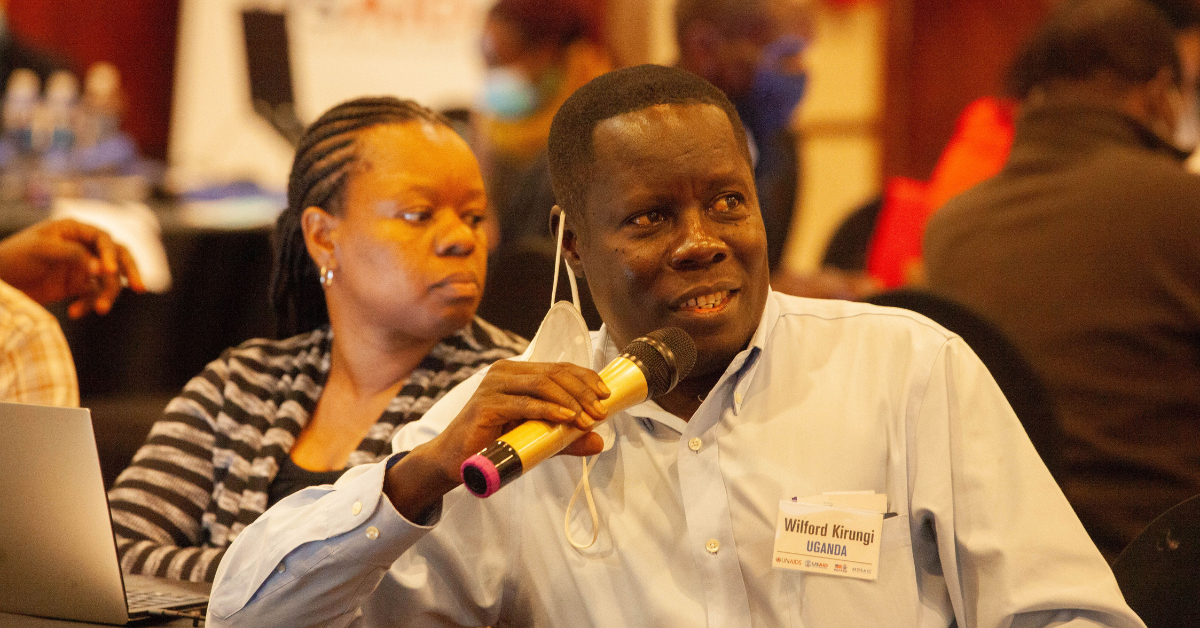Katharine Kripke, Avenir Health
PrEP-it — launched in 2019 as a Microsoft Excel-based tool for pre-exposure prophylaxis (PrEP) programs and then as a more user-friendly online tool in 2021 — had been used in only a handful of countries prior to August 2022 to set targets for PrEP coverage and forecast commodity needs. Given the response to two recent workshops held in Lusaka, Zambia, that is changing now.
In August 2022, MOSAIC and UNAIDS collaboratively convened these regional capacity-strengthening workshops, which were designed to prepare participants to plan and facilitate a PrEP target-setting exercise using PrEP-it in their respective countries. Interest in the workshops exceeded our expectations with about 100 delegates from 15 countries in eastern and southern Africa and Nigeria participating in them. The country delegations included representatives from ministries of health, the U.S. President’s Emergency Plan for AIDS Relief (PEPFAR), the World Health Organization (WHO), UNAIDS, MOSAIC partners, and other country stakeholders. Headquarters representatives from WHO and the Global Fund also participated.
What is PrEP-it?
A PrEP implementation planning, monitoring, and evaluation tool, PrEP-it includes a number of linked modules that work together, allowing users to:
- Set national or subnational PrEP targets
- Project the cost and impact of PrEP targets
- Forecast PrEP product needs
- Identify hot spots where PrEP should be prioritized for adolescent girls and young women based on their HIV incidence
We believe that PrEP-it will be even more useful to programs as they begin to introduce new HIV prevention methods. It enables users to set targets for a mix of different PrEP methods, such as oral PrEP, the dapivirine ring (PrEP ring), and injectable cabotegravir for PrEP (CAB PrEP). It can also aggregate targets, costs, impact, and product needs from a set of subnational files.

An enthusiastic response
During the workshops, teams became acquainted with the tool and benefited from lessons learned from PrEP-it applications in Eswatini, Kenya, Mozambique, and Nigeria. We were fortunate to have presenters and facilitators from Kenya and Mozambique who had received prior training from the MOSAIC team as they applied PrEP-it in their countries. Many participants mentioned how valuable it was to have people with on-the-ground experience to help lead the workshop.
The teams worked together using data from their respective countries to test the tool’s functions and start planning national target-setting exercises. In his closing remarks during a follow-up meeting for Zambian stakeholders, Bwalya Simunyola, the Ministry of Health’s chief pharmacist in charge of logistics, summed up the reactions expressed by many workshop participants: “This is a robust tool, which is a great help to the program in Zambia.”
As organizers, we were delighted by the enthusiasm for PrEP-it. Feedback from the participants during the workshop and in a post-workshop survey indicated that they were excited about PrEP-it, found it to be user-friendly, and appreciated the data-informed, systematic approach to target-setting facilitated by the tool.
Among the representatives of the 13 countries who responded to the survey, those from 11 countries indicated their countries planned to use PrEP-it to set targets in the next six months. Twenty-eight out of 30 respondents said they felt capacitated to use PrEP-it upon returning home. Participants also had high praise for the workshop presentations, interactive format, hands-on exercises, and sharing of country experiences with the tool.
The workshops — especially with the support of UNAIDS — have helped propel the tool forward as an important resource for PrEP target-setting. By September, workshop participants were already beginning to apply the training they had received. In Uganda, for example, the team of Ministry of Health, USAID, Centers for Disease Control and Prevention, and UNAIDS staff held a retreat on 30 September in Entebbe, where they used PrEP-it to set draft targets for their country. Now they are gathering additional data and conducting data quality exercises to refine and finalize the targets.
Next, we intend to present similar workshops for countries in West and Central Africa. Outputs from the workshop will help countries prepare for their Global Fund application and PEPFAR Country Operational Plan processes and inform their PrEP targets as they operationalize their 2025 HIV prevention roadmaps.
Featured Image: Workshop participant Dr. Wilford Kirungi, Head of Strategic Information, Uganda Ministry of Health, engages in discussion (Charles Masompe/Reign Photography).


